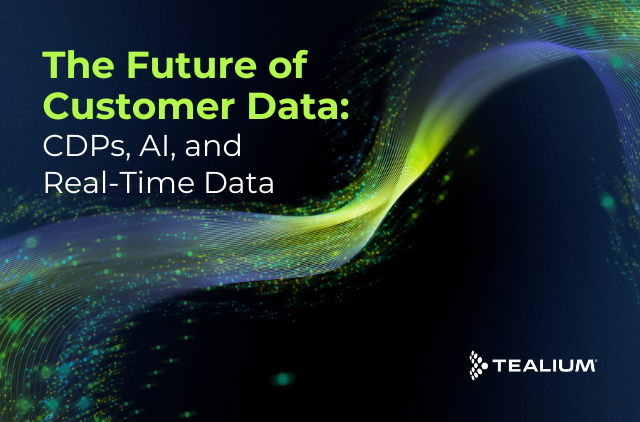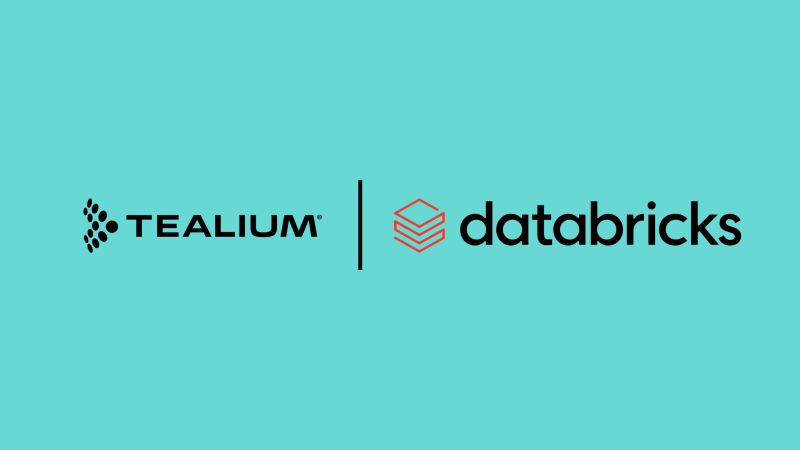[rt_reading_time label=”Reading Time:” postfix=”minutes” postfix_singular=”minute” padding_vertical=”4″]
Personalization has moved from an industry buzzword to a top priority across industries as more and more effort is given to putting the customer at the center of their business. It’s easy to see why brands are prioritizing personalization. Research from Forrester has indicated that 77% of consumers will choose, recommend, or pay more for brands that provide personalized services or experiences.
Yet even with seemingly endless amounts of data, few companies are able to generate real results and deliver meaningful, relevant experiences to customers ‘in-the-moment’. A recent McKinsey survey of senior marketing leaders found that only 15 percent of CMOs believe their company is on the right track with personalization.
In a recent Tealium webinar, our VP of Product, Sav Khetan took a deep dive into personalization and discussed the main barriers preventing organizations from delivering results through personalization as well as how organizations can begin to find success in their efforts.
In the 40-minute webinar, we cover three opportunities for your brand when defining your personalization strategy as well as suggestions and recommendations for helping your organization make progress with personalization. Let’s review a few key takeaways (with timestamps in green) from each of the three opportunities.
Opportunity #1: The Whole is Greater Than the Sum of Its Parts (6:40)
What do we mean by this? Most marketing organizations have a wide breadth of channels and tools being leveraged to communicate with customers (website, mobile app, call center, paid media, search, social, brick and mortar location, IoT devices, email, etc.). Each has its own database that is used to drive measurement and analytics for that channel. As efforts to run more data-driven and sophisticated marketing grow within an organization, typically ad-hoc integrations being developed between a few of the channels start leveraging cross channel data. While this channel-based strategy may enable siloed channels to work well on their own, marketers still miss value from treating these channels as a single system.
This is an issue impacting many organizations today and a large reason for the rise of the Customer Data Platform (CDP). Rather than connecting your channels individually, CDPs help brands integrate data across their channels and begin to build a single view of their customers and move to an audience-based data organization rather than a channel-based organization.
Comparing both of these diagrams, you’ll still see that all the channels are still connected to each other but the difference is that all customer data is centralized and common to each of the channels being used to engage your customers. By creating a centralized source of customer data, marketers can begin to get a complete picture of audience actions across their data sources and build more sophisticated personalization efforts across those channels.
Opportunity #2: The Difference Between Ordinary and Extraordinary is Practice (18:16)
Personalization is not a program, it’s a practice. Organizations are likely to start out with simple personalization efforts and make their way towards :
- One-to-All Strategies (low level of personalization)
- One-to-Many Strategies
- One-to-Same Strategies
- One-to-Few Strategies
- One-to-One Strategies
- One-to-Moment Strategies (highest level of intent-based personalization)
In reality, marketing organizations shouldn’t treat these stages like a set of stairs to climb up to achieve higher and higher levels of ROI. A higher level of sophistication in personalization may not equate to a higher level of revenue driven by your business. Marketing organizations should evaluate where their highest level of ROI is at each of these personalization stages and build a mix of strategies that’s right for them. A retail brand’s mix of personalization strategies may look much different than a B2B brand’s mix.
Ultimately the right strategy depends on your business model and each marketing organization should spend the time to think about broad groups of your customers and what they expect from your brand, plus the potential benefit investing in individualized conversations with consumers can have on your bottom line.
Opportunity #3: Tech and Data Are Key, But Not Silver Bullets (26:25)
Think of tech and data as an important ingredient in a four-part recipe that also needs to contain analytics, organizational processes and creative content.
As enterprises begin to combine these four parts to create and execute personalization strategies they’ll likely find that each part is at a different level of maturity than the other in addition to finding that all of these groups contain different people, different skill sets, different budgets and a whole host of other complexites. While this may seem daunting at first, a simple crawl, walk, run maturity chart can help identify where each of these four pieces may currently be and what is the next step in that evolution.
Conclusion
Watch the full webinar on-demand here and you’ll walk away with a guide to leveraging your first-party data to build integrated, cross-channel personalization strategies that can deliver more value for both customers and the business.












